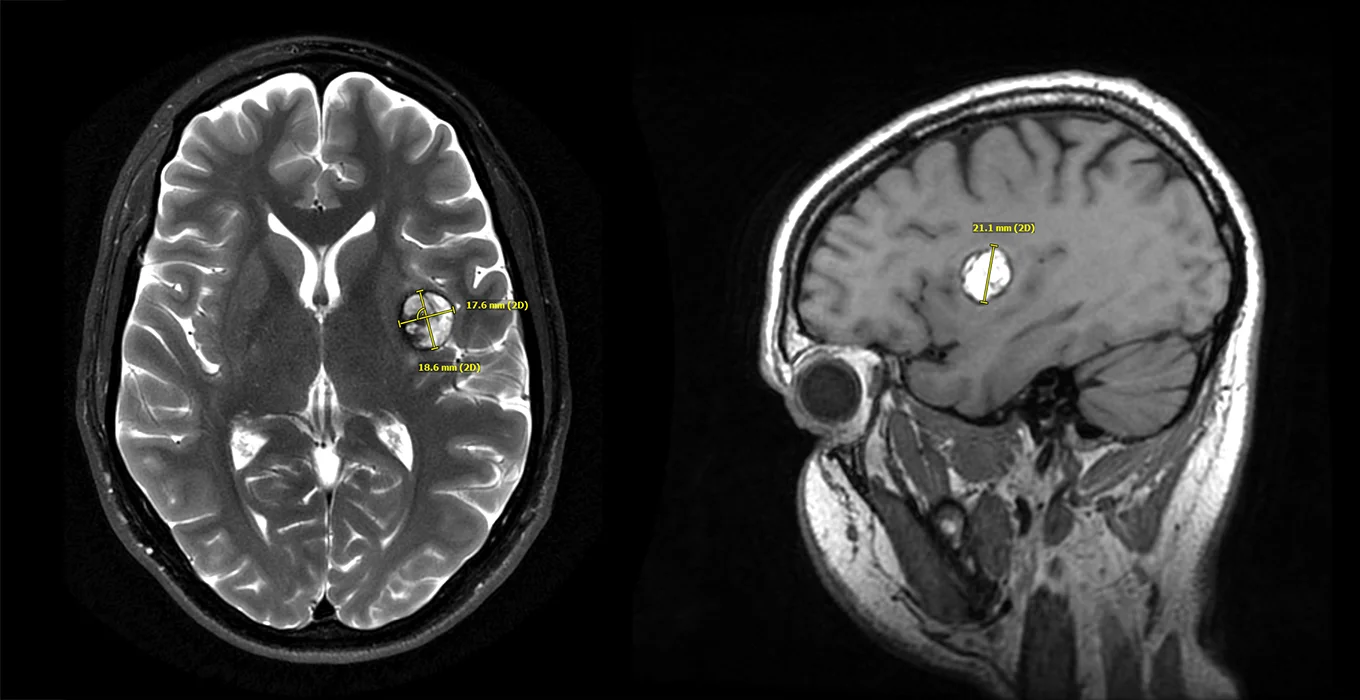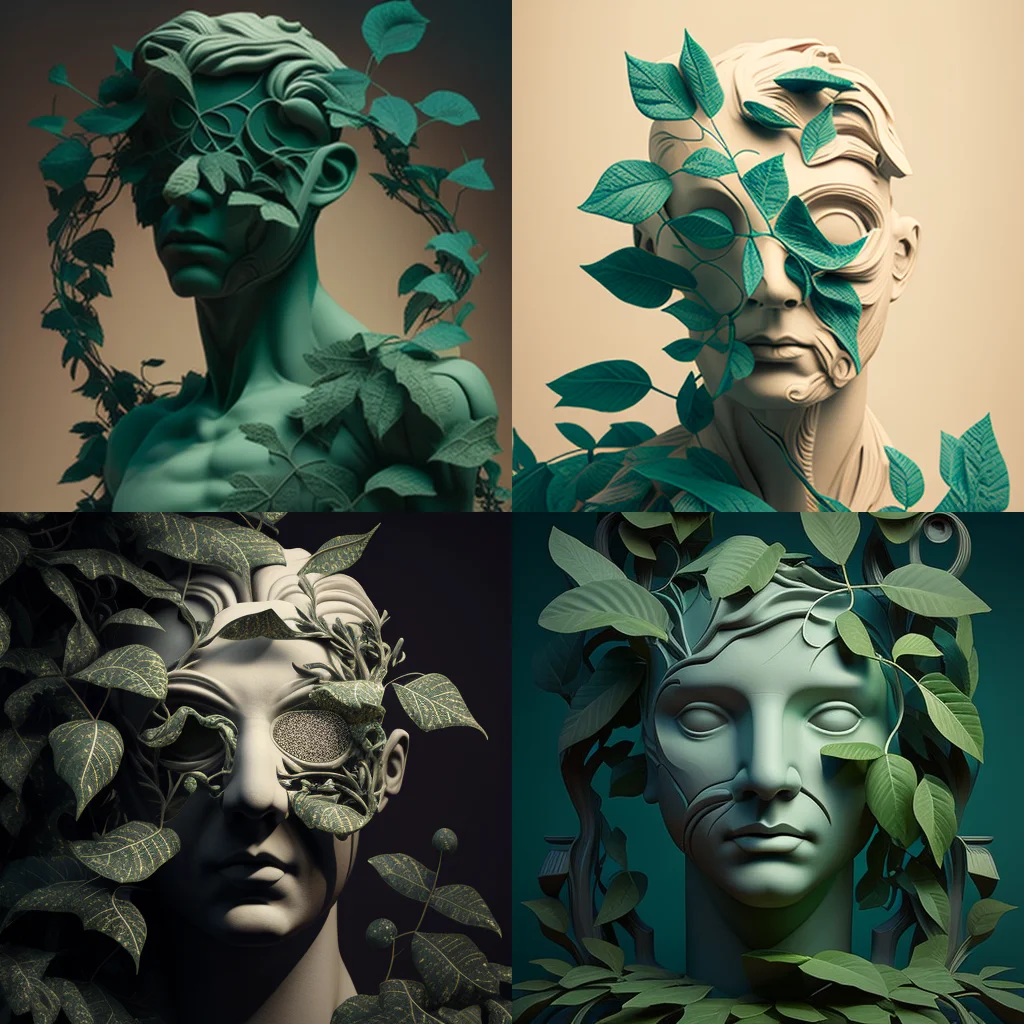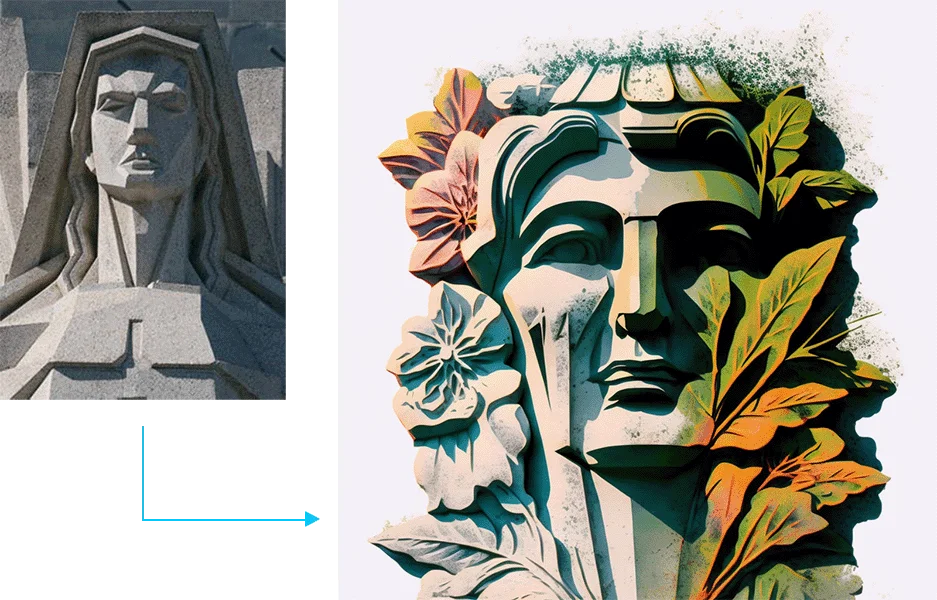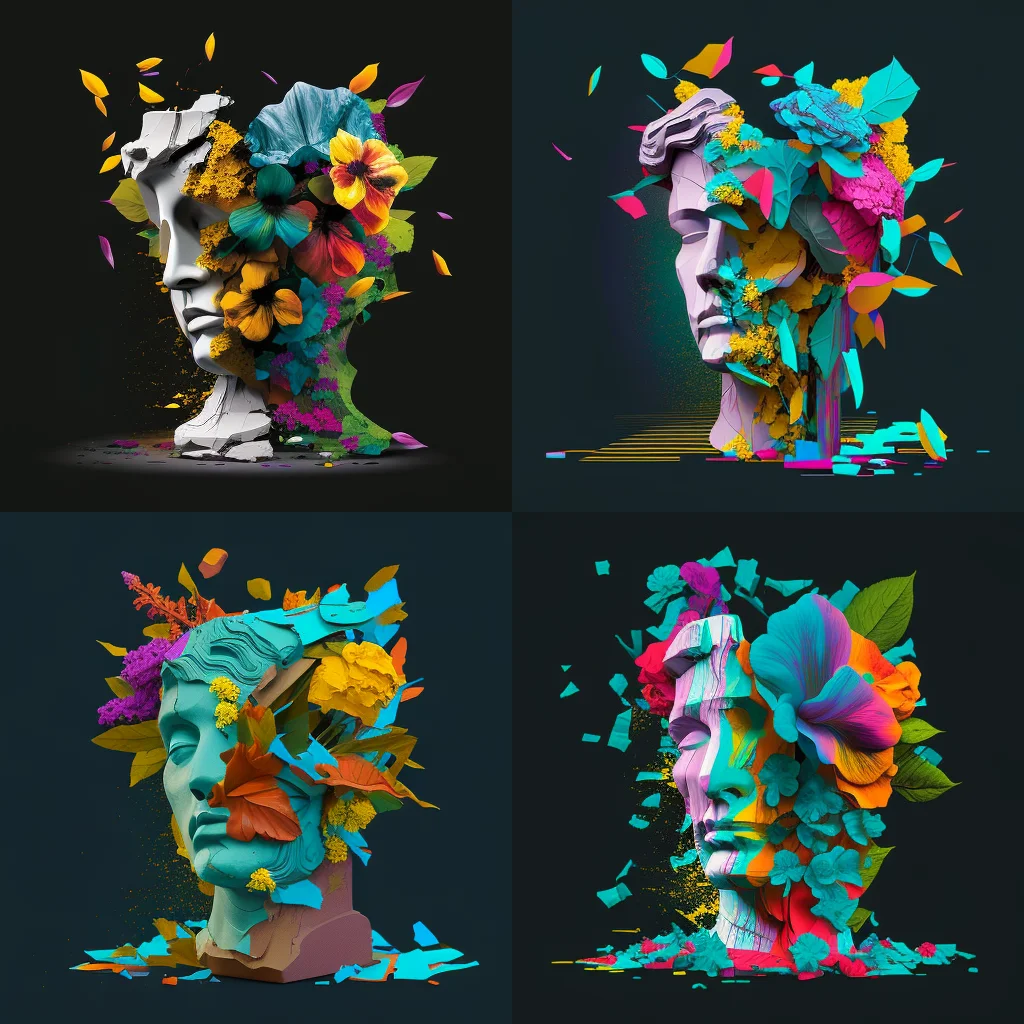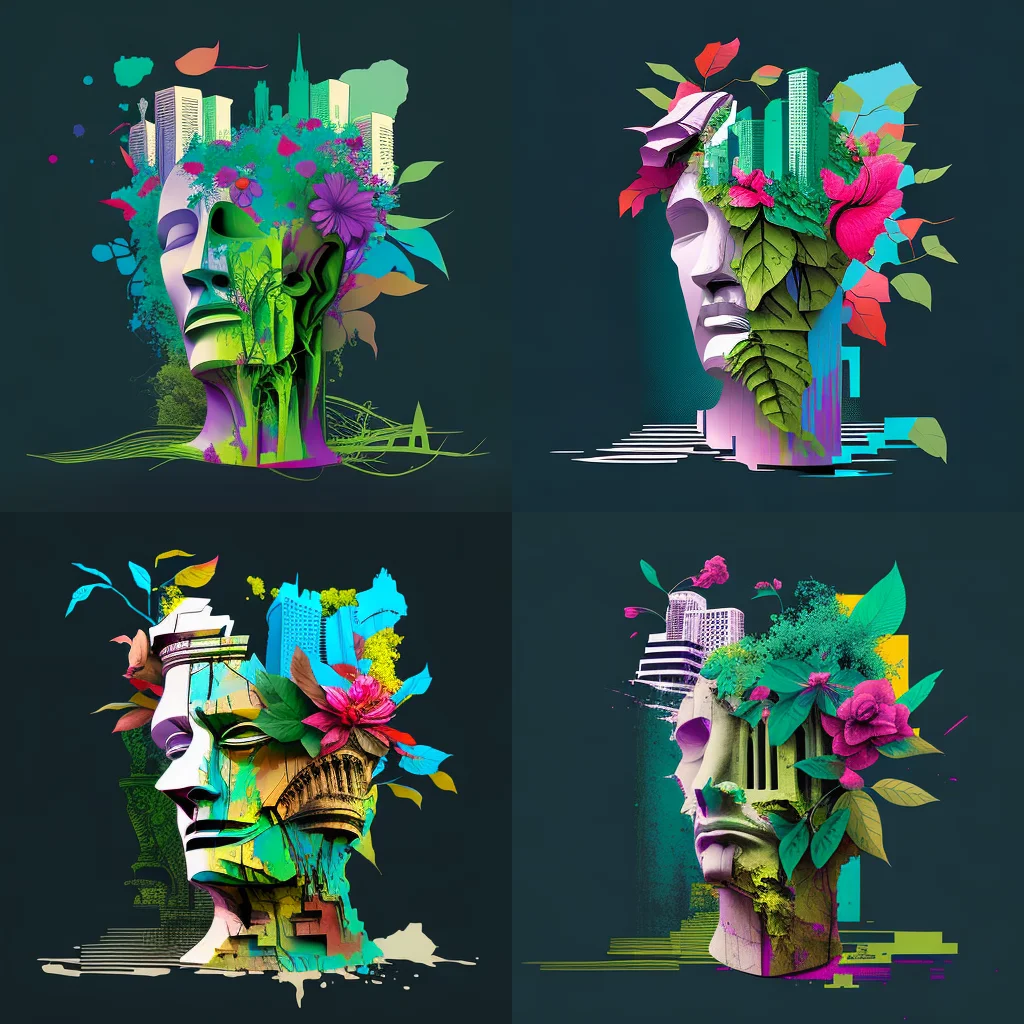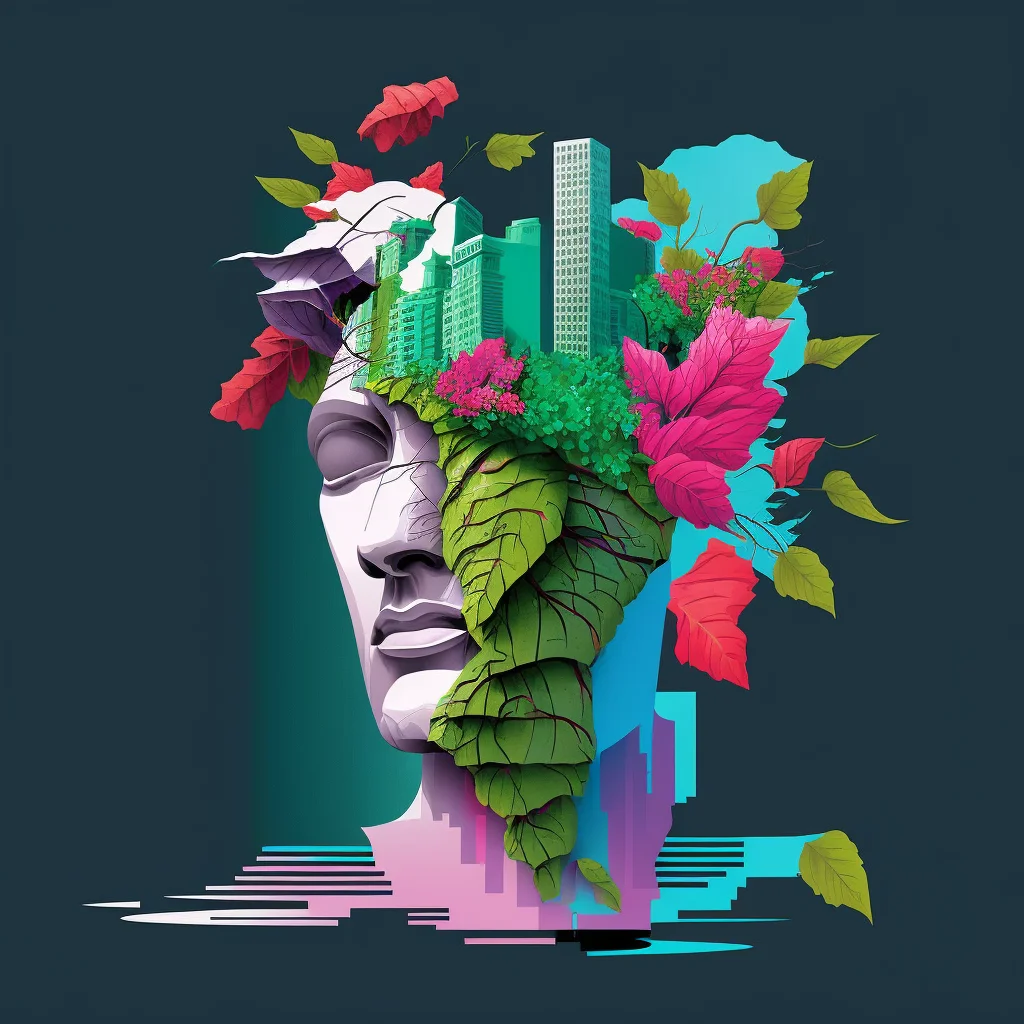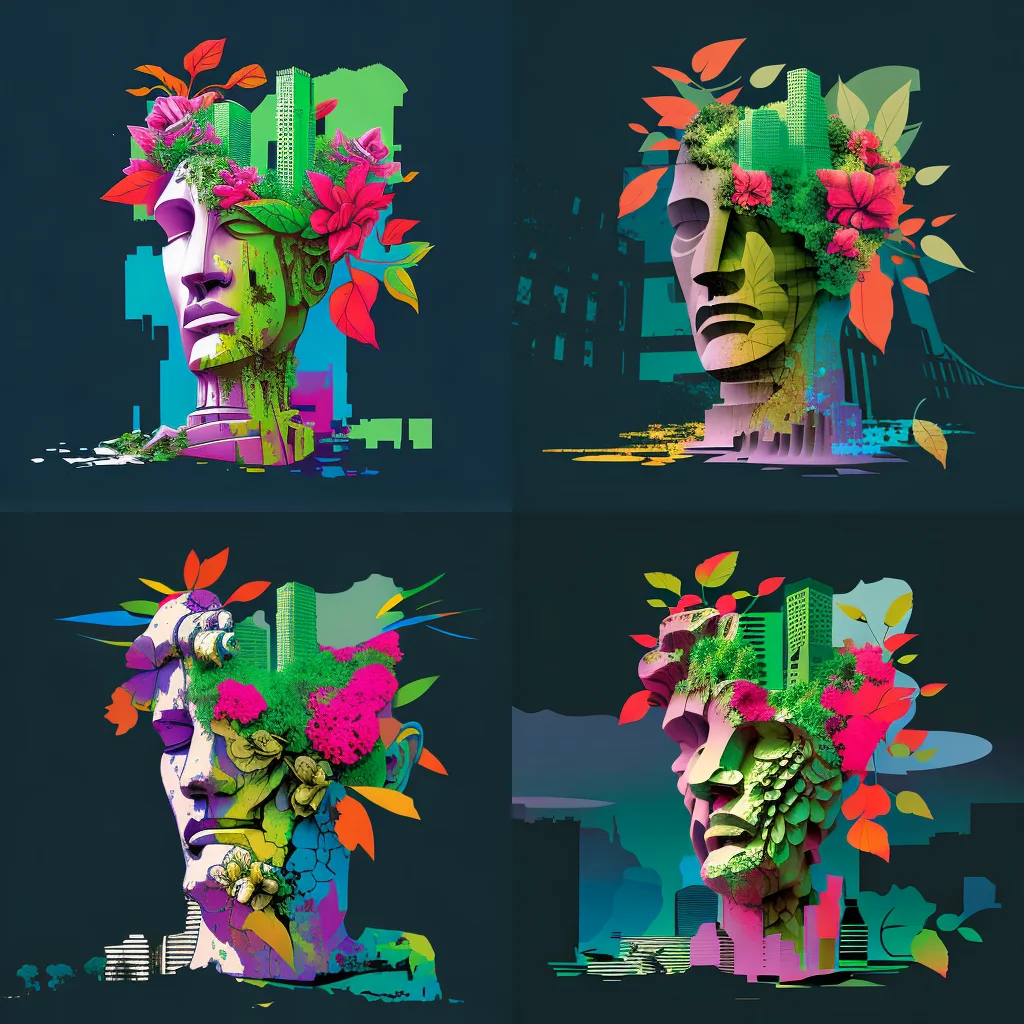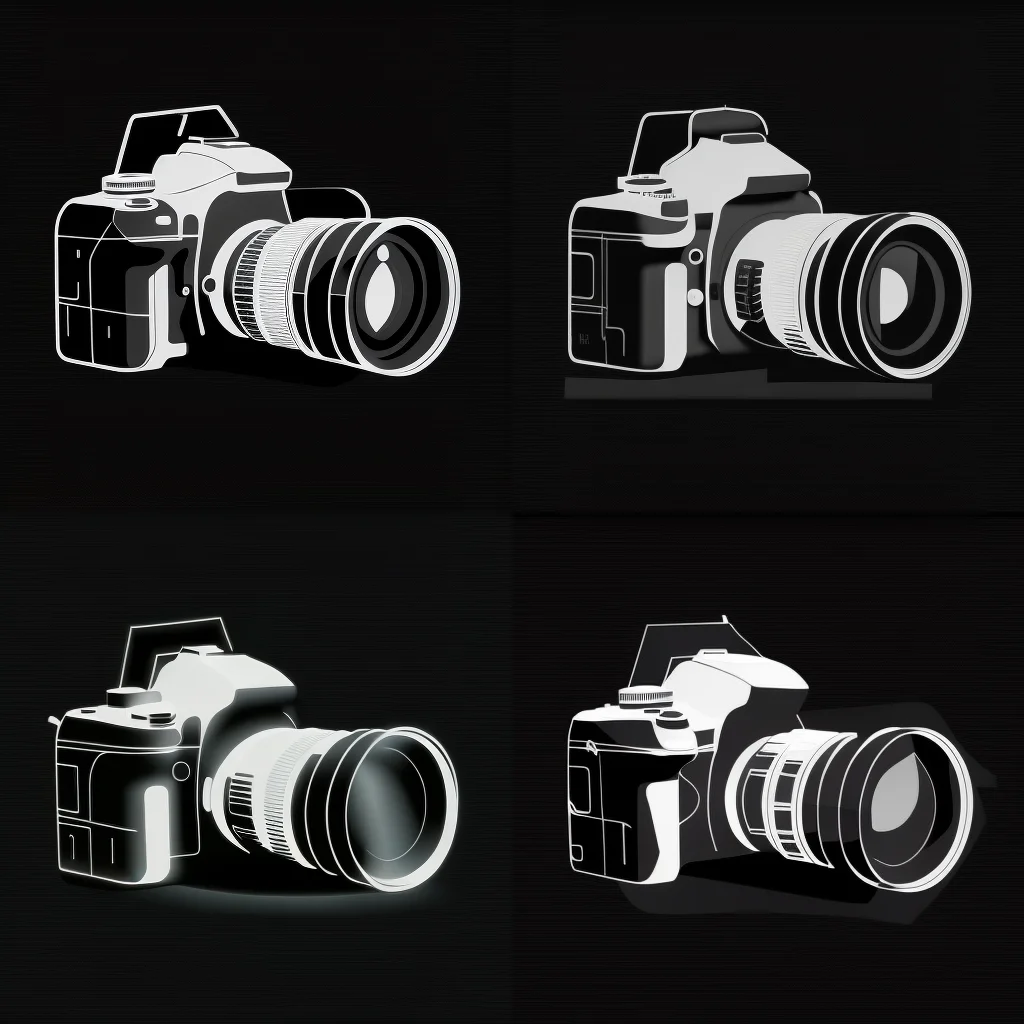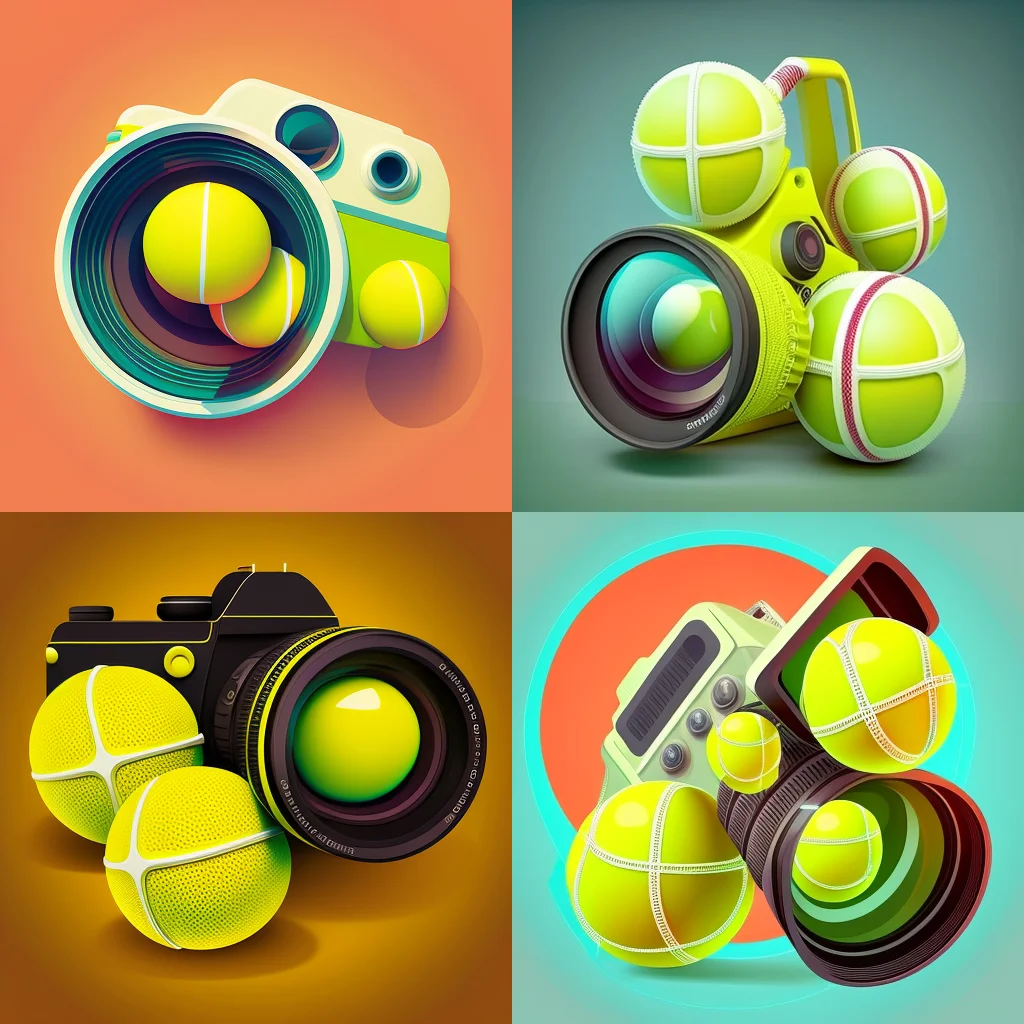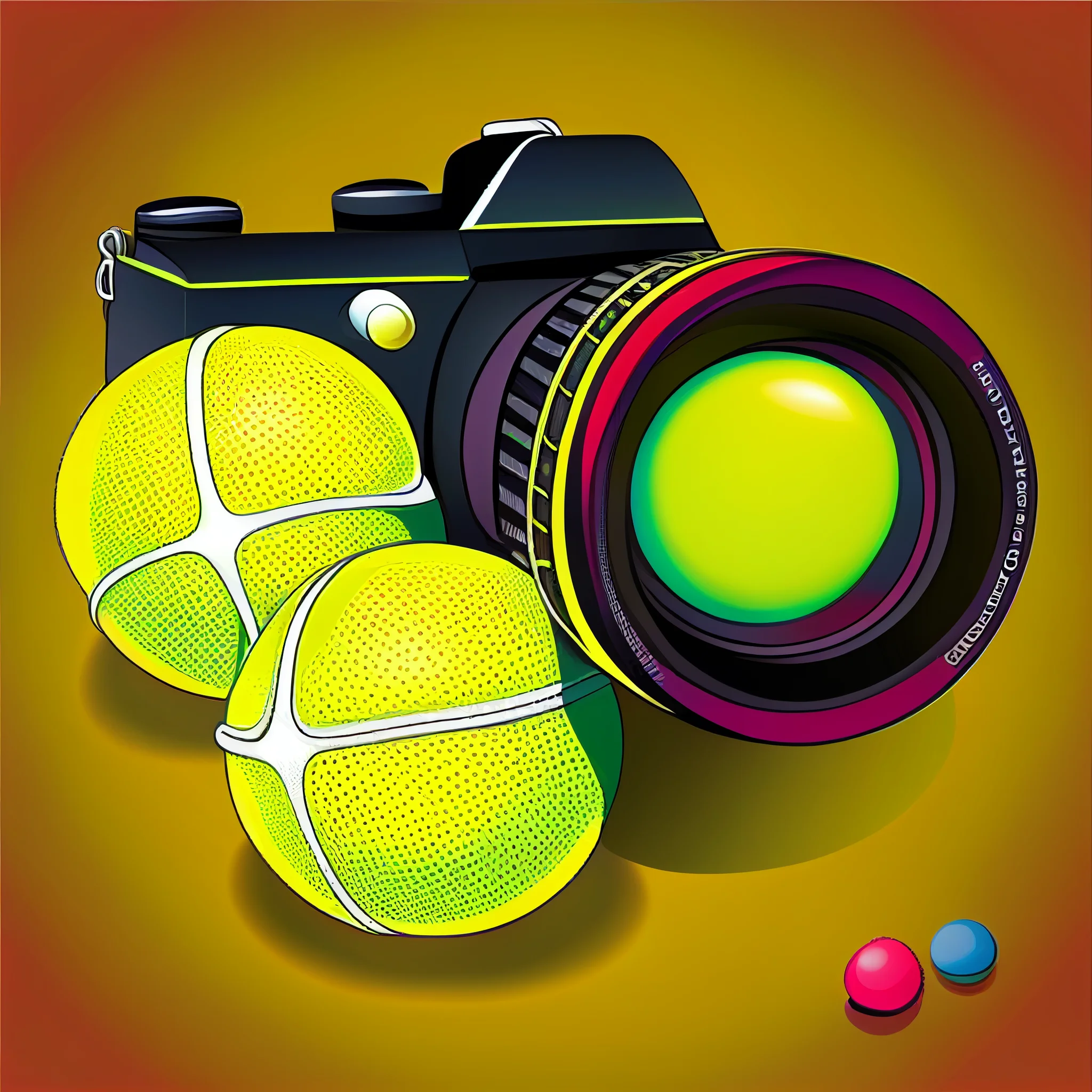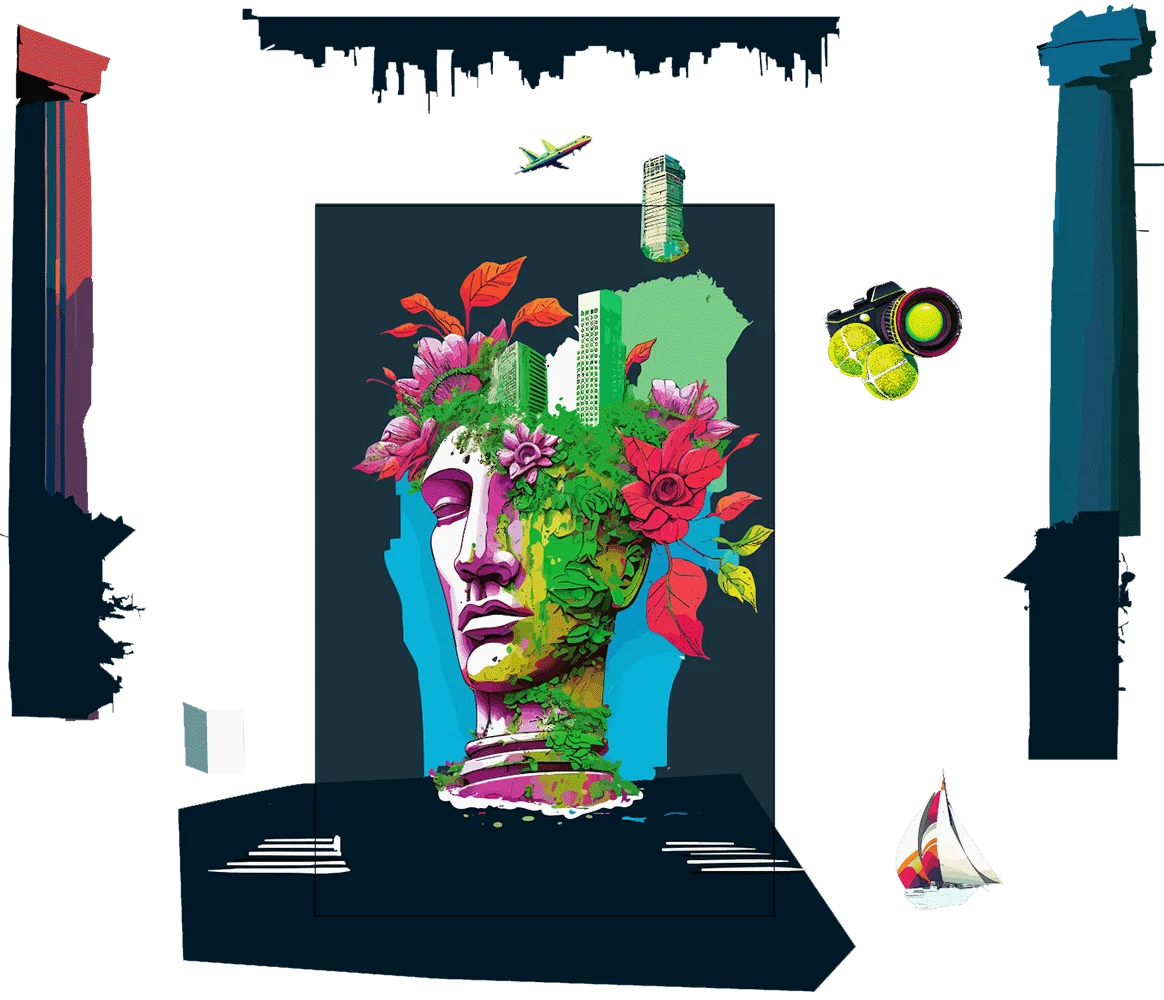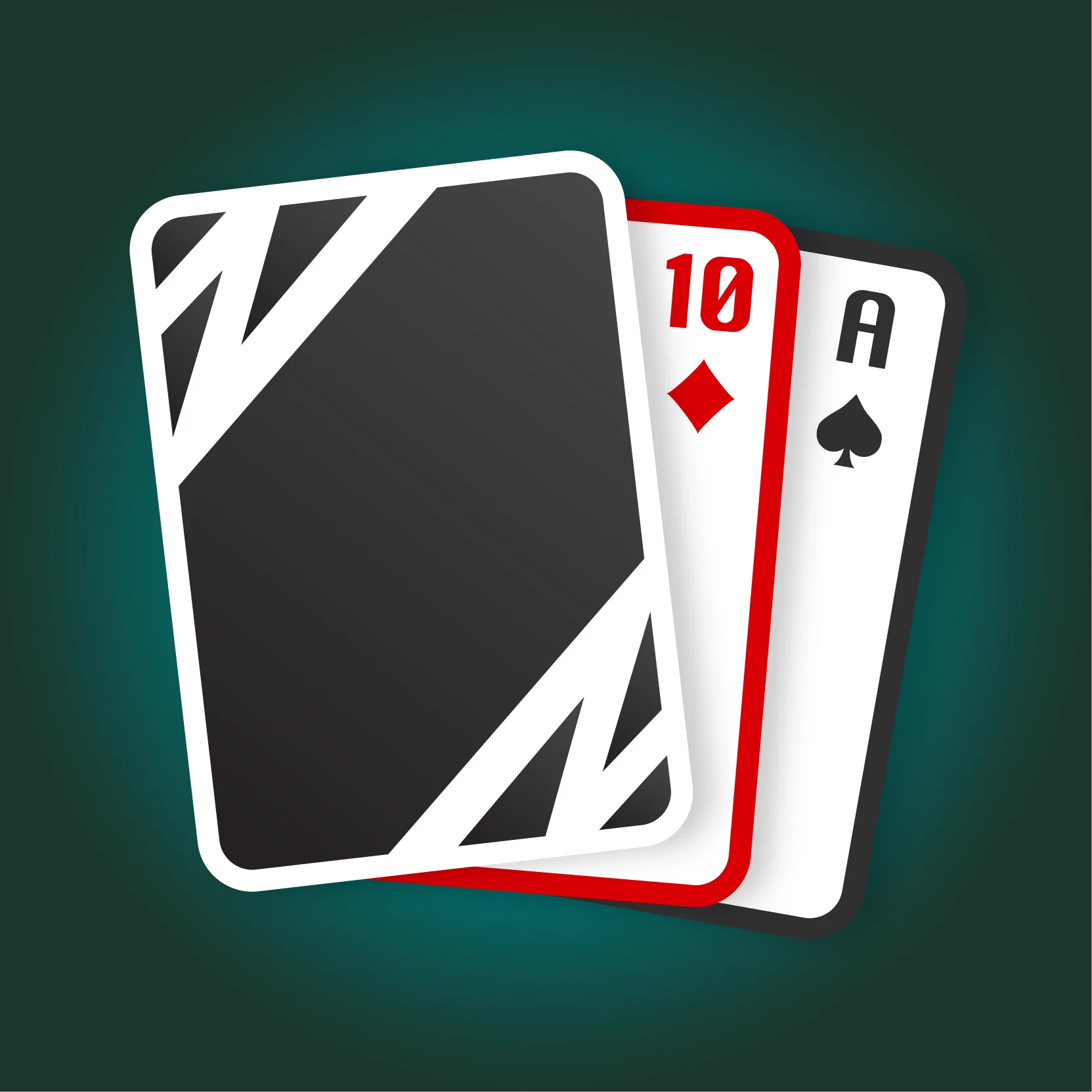The Card
2021-2023
After several years and many life changes, I leveraged the power of generative AI to break down longstanding creative blockers.
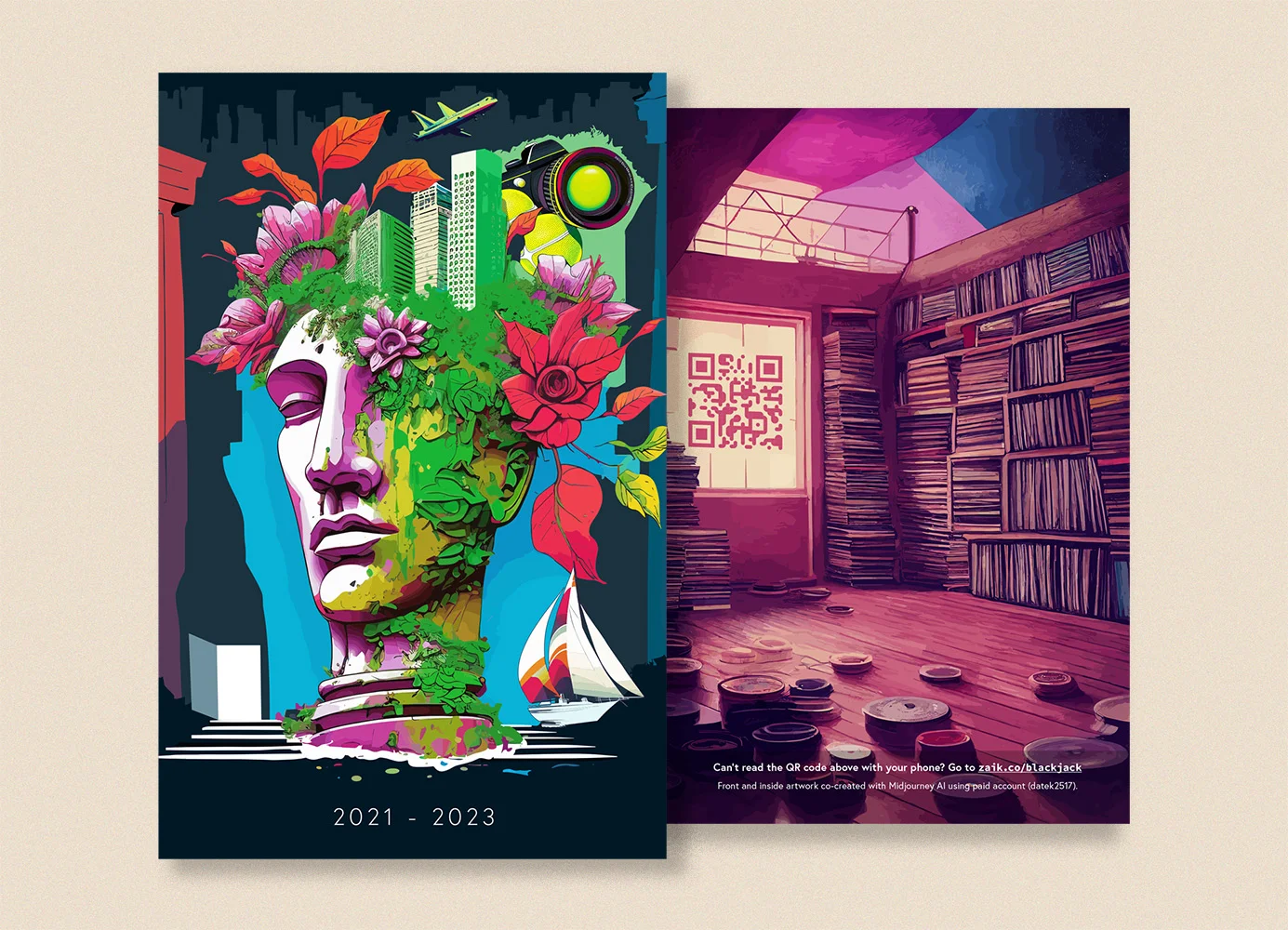
Introduction
Starting in 2011, I set out to create a greeting card to celebrate New Years Day. I cared most about expanding my visual design skills and keeping in touch with friends and family. The first card was a simple matter of finding, recoloring, and combining digital art from a few different sources to create an original design. It kicked off an annual tradition. Some people send Christmas cards; I send New Years Cards.
Of course, nothing is ever that straightforward. For each subsequent year, I would select a new visual style and create the art for the card, mostly on my own. I learned how to draw vector art in Illustrator, picked up skills with typography and color composition, incorporated my own photography, and even drew comic book art by hand using the iPad. I pushed myself to make each card better than the last. And the number of hours to produce a card more than quadrupled; by the ninth one, I had spent over 16 hours to create it! My delivery schedule went haywire, extended weeks and even months beyond New Years Day. Overwhelmed, I missed my self-imposed deadlines for the 2019 Card and instead sent it out a year later in 2020.
That was an early sign of the creativity and skills challenges I would battle for the tenth card. When the COVID-19 pandemic hit later in 2020, I figured that the “BRZ Card” was more important than ever as a tool to keep in touch as the world changed. But as loved ones and friends suffered through the virus, I felt it difficult to come up with a theme that would be respectful of the tragedy folks were experiencing. My visual design skills languished, and the months of lockdown passed by without a new card.
A Cranial Wrinkle
Little did I know how my own life was about to change. In August 2020, I started feeling weird sensations in my jaw and an urge to cough that would not go away. Doctors found a lump of enlarged blood vessels in the left part of my brain, called a “cavernous malformation”. They prescribed anti-seizure medicine, which in time was doubled in dosage, but by March of 2021 the now daily seizures made it clear that brain surgery was needed to prevent me from having a major epileptic stroke. I had an awake craniotomy in July of that year. I could tell you plenty more about that: while the initial operation was successful, things got really dark and terrifying for a little while afterward, and it took a few more months for things to truly settle down. I returned to my job after a couple months of leave, worked for a while, and then decided to do a reset in the summer of 2022 when I began a year-long “creative sabbatical” to enjoy the parts of living I had been neglecting.
That's where I find myself now. The sabbatical has been rejuvenating on a level distinct from anything I have ever experienced. I've rebalanced my life, focused on myself, traveled extensively, picked up some important new passions, and moved to a new place adjacent to the creative industries of Southern California. And I picked up a new set of skills, working with artificial intelligence, to finally break through the blockers and produce this card.
Co-Creating with AI
If you expect me to explain what the 2023 Card is about on a thematic level, well…sorry, but that's not what this article is about. What I will tell you is that the themes cover the entire journey I explained earlier. I initially planned to use a similar approach as I did for the ninth card: drawing it using the Apple Pencil and iPad. Not wanting to retread old territory, I instead gravitated to Adobe Illustrator on iPad. I tried sketching out the artwork I had in mind, at first imagining the entire front and back of this card as one continuous piece of artwork. That was far too ambitious, considering my diminishing graphic design skills. It was also really challenging to sketch out the unique artwork I wanted to create. I tried a few different art styles, including two-dimensional abstract patterns and Japanese sumi-e brush strokes. None of them really fit, which shook my creative confidence.
Then I discovered the world of generative artificial intelligence (”AI”). When OpenAI launched ChatGPT in 2022, it was scary and exciting and transformative, but the best part was watching how creative people were using AI to co-create original works of art. I soon discovered image generation AI tools, such as Stable Diffusion, DALL-E, and Midjourney. I set up a Midjourney account and started talking to the AI through increasingly complex prompts, sets of instructions for the art styles, graphical elements, aspect ratios, filters, and pretty much everything else needed to explain a piece of artwork for the AI to create. I tried out a few early prompts for various topics, then it popped into my head: what if this tool could help me figure out the elusive card artwork?
The first step was to figure out the “cracked statue” at the heart of the piece. I was reminded of the exuberant Art Deco statues at the Hoover Dam near Las Vegas. I started with a simple prompt:
Art deco style statue of a man with vines and plant growth growing out of its right eye.
This is a hard subject to describe, and as you can imagine, it yielded a bunch of results:
A question lingered in my head throughout this entire process: Was this cheating? If the computer was spitting out the artwork, did I have any right to claim it as my own creation? I said to myself that I did not want to just write a prompt and put the resulting artwork straight on a card to send out; that didn't feel right.
Eventually, I started uploading actual photos of the Hoover Dam statues and other Art Deco statue faces.
The statue was getting too realistic and dark and brooding, so I experimented with specifying “vector art, vibrant colors, line art” in the prompt. I really started to love the rainbow colors Midjourney was using:
From this vibrant artwork, I created a seed, a set of instructions to form the foundation of future artwork in the same style. I used it to create a bunch of other pieces in the same style.
The head of a statue broken with botanic styles flowers growing out of it --seed 2372873823
One of these was close, but not quite there. Even so, I upscaled it using Midjourney as one possible option to use:
Not completely satisfied, I uploaded this image as a new starting place and revised the prompt:
The head of a statue broken with botanic styles flowers growing out of it, vector art, vibrant colors. Background is a ruined cityscape of skyscrapers overgrown with vines, flowers, jungle. Halftone style. --seed 2372873823
An upscaled version of option 1 resulted in the artwork I ended up using for the card:
All told, I think I spent about four hours to get to the statue artwork I liked. I have left out a bunch of iterations; you can find them on my Midjourney profile at this link.
This process started to ease my reservations about working with the AI, because it felt like true co-creation: I wasn't just relying on the AI to do everything for me, but combining ideas from each output to create something new. I also noticed that I couldn't use just one written prompt to express all of my ideas at once. So I decided to use a two-pronged approach: apply the seed in order to generate a bunch of elements, and then create a final composition on my own to establish an original piece of art.
Here are several examples that made their way to the final card graphic:
Tennis racket laying flat, with a couple tennis balls. Vector art, vibrant colors. --seed 2372873823
Tennis balls, tennis racket, DSLR camera with lens. Vector art, no gradients, flat design, vibrant colors. --seed 2372873823
Making the Final Composition
The line art style I used in all the prompts translated well to create vectors, infinitely scalable “point and line” drawings that you can create using tools such as Adobe Illustrator. Vectors are the basis for most of the card designs I have made for the last 12 years. I used a free web tool currently in an open beta, Vectorizer.AI, to translate the rasterized images from Midjourney into vector shapes that could be brought into Illustrator. I had to do a lot of work to arrange and bring together all the vectorized artwork—this definitely was not just giving instructions to a computer and having it do all the work for me! As I have done since 2011, I produced the final typography and layout for the printed card in Adobe InDesign and sent it off to a local print shop, Sprinting, in my new home of Long Beach, California.
The Playlist
Up to this point, I have left out one other critical introduction of the 2021-2023 Card: the playlist. I had many ideas back in 2020 for what I wanted to do with the card, ranging from making a literal flip-book animation to putting together a short film. I wanted to illustrate the journey I have been through over the past several years through a story. All those ideas proved too costly or complicated to realize. As I rethought my storytelling approach, I was reminded of a recurring element from past cards: a song whose lyrics I would include on the inside of the card.
In years past, I selected a song which I felt best encapsulated a core theme from the year prior. For instance, for the 2018 Card, I included lyrics from Lissie's song “My Wild West”. Too much had happened in my life over the past several years to be represented by one song. So how about a playlist?
BLACKJACK is the “wine pairing” for this card. I incorporated a QR code into the inside artwork (which was, like the cover graphic, co-created with Midjourney), so scan it or go here to give the playlist a listen.
Conclusion
Artificial intelligence saved the 2021-2023 Card. I was in a deep creative quagmire for several years as I recovered from the brain surgery and figured out the next steps in my life. My graphic design skills atrophied. But generative AI amplified my creative ideas and helped me figure out how to realize them. While I don't know if I will use AI tools for all future cards, I do see it as an important and extremely valuable creative tool.
The rapid expansion of AI is feeding a series of complex debates with world-changing implications. AI without safeguards could destroy our civilization and our very concept of humanity. The AI models I used to help create this original art were taught on the corpus of existing human art made by real people. Even though I own the outputs from Midjourney under the licensing terms of my paid account, I understand the very real risks of artists losing employment if we don't strike a balance between remixes and original ideas.
This project challenged me to reframe my thoughts on AI for creative work. I am a humanist. I care deeply about machines and human beings working together, rather than one replacing the other. I tried to adhere to that model through my many prompts and iterations, and I felt it was important for me to construct the final piece of art using the generated elements. This, I feel, is a comfortable balance. But we'll see: time will tell as to how our opinions on co-creation with AI shift.
Published June 2023


